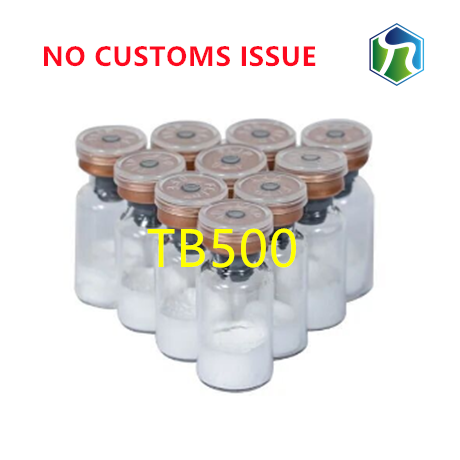
- +86-13363869198
- weimiaohb@126.com

Dùbh . 06, 2024 20:19 Back to list
cas 1228585-88-3 gs-9620
Exploring the Compound GS-9620 A Promising Candidate in Antiviral Research
In the realm of medicinal chemistry and pharmaceutical research, the pursuit of effective antiviral agents has gained significant momentum. Among the array of compounds undergoing investigation, GS-9620, a compound associated with CAS number 1228585-88-3, has emerged as a noteworthy contender due to its unique properties and potential therapeutic applications. This article will delve into the characteristics, mechanisms, and future prospects of GS-9620 in the landscape of antiviral treatments.
Introduction to GS-9620
GS-9620 is a small-molecule compound primarily recognized for its role as an agonist of Toll-like receptor 7 (TLR7). This particular receptor is part of the immune system’s innate response, playing a crucial role in detecting viral RNA and triggering an immune response. By activating TLR7, GS-9620 is believed to enhance the body’s ability to fight against viral infections, making it a compound of interest in the development of therapies for various viral diseases.
Mechanism of Action
The mechanism of action of GS-9620 is fundamentally linked to its ability to stimulate TLR7. Once activated by GS-9620, TLR7 initiates a cascade of immunological events that lead to the production of interferons and other cytokines. These molecules are pivotal in orchestrating the immune response, enhancing the activity of natural killer cells, and promoting the development of adaptive immunity.
Furthermore, GS-9620 has shown promise not only as a standalone treatment but also as an adjuvant therapy, potentially improving the efficacy of other antiviral agents. The synergy between GS-9620 and conventional antiviral drugs could enhance viral clearance, making it a vital player in the ongoing battle against virulent pathogens.
Research and Development
cas 1228585-88-3 gs-9620

Numerous studies have investigated GS-9620’s efficacy against various viral infections, notably its application in hepatitis B virus (HBV) research. Chronic HBV infection remains a significant global health challenge, with millions affected worldwide. Researchers have aimed to explore GS-9620’s potential to serve as a therapeutic option for individuals with chronic HBV, particularly those who struggle with existing treatment regimens.
In clinical trials, GS-9620 has demonstrated a good safety profile, with manageable side effects, which is a crucial factor in drug development. Early-phase trials reported promising outcomes regarding viral load reduction and enhanced immune response in subjects receiving the compound. These findings bolster the argument for further research to optimize dosing strategies and evaluate long-term efficacy.
Future Prospects
The future of GS-9620 appears promising, yet it is not without challenges. One paramount concern remains the variability in individual immune responses. As with many immunomodulatory therapies, the range of efficacy among different patient populations necessitates a thorough understanding of the biomolecular factors that influence treatment outcomes.
Moreover, as research progresses, the potential for combination therapies emerges as a significant avenue for exploration. The integration of GS-9620 with other antiviral agents could herald a new era of personalized medicine, tailoring treatments to individual immune profiles. This strategic combination approach may enhance therapeutic benefits while mitigating resistance development, a common hurdle in antiviral research.
In addition to chronic HBV, other viral infections, such as HIV and various emerging viral pathogens, may also benefit from the therapeutic potential of GS-9620. The ongoing exploration of this compound signifies a commitment to understanding its broader applications, which could reverberate across different fields of virology and immunology.
Conclusion
GS-9620, with its CAS number 1228585-88-3, stands at the forefront of antiviral research due to its innovative mechanism of action targeting TLR7. Its potential applications, particularly in chronic viral infections such as hepatitis B, underline an important stride towards enhancing antiviral therapies. As research continues to unravel the full extent of GS-9620’s capabilities, the scientific community remains hopeful that this compound will play a pivotal role in advancing antiviral treatment strategies and improving patient outcomes in the face of persistent viral threats.
-
High Quality SGT-163 CAS 1099-87-2 Supplier & Factory Reliable SGT-163 Manufacturer
NewsJun.10,2025
-
High Quality 3-Chloropyridine CAS 626-60-8 - Reliable Factories & Suppliers
NewsJun.10,2025
-
CAS 157115-85-0 Bulk Suppliers - High Purity & Low Prices
NewsJun.10,2025
-
High Purity PMK Ethyl Glycidate Manufacturer 99% Quality Supply
NewsJun.10,2025
-
Pure CAS 57-85-2 Testosterone Propionate Pharma Grade Supplier
NewsJun.09,2025
-
Premium Tadalafil CAS 171596-29-5 Suppliers & Factories
NewsJun.09,2025